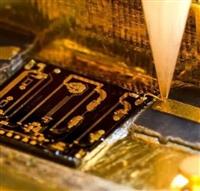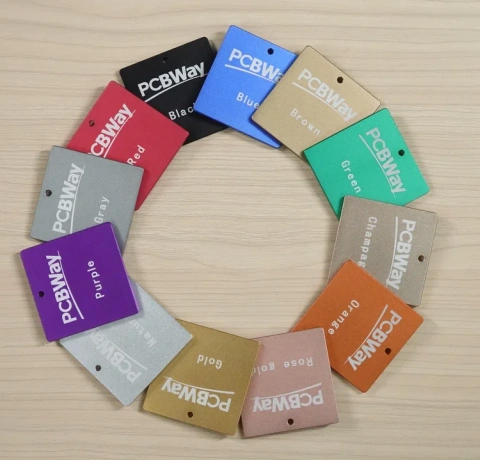
Fused Coating
A metallic coating, usually tin or solder alluvia, which has been melted and solidified forming a metallurgical bond to the base material.
Functional Test
To check an assembly using equipment that tests for the functions intended and engaging inputs and outputs.
Fully-Additive Process
An additive process wherein the entire thickness of electrically isolated conductors is built-up by copper.
FR4
Flame retardent laminate made from woven glass fibre material impregnated with epoxy resin.
Forced-air Convection
Convection, consisting of flow, rate, velocity and temperature, as heat transfer of fluid or gas over solder joints to be re-flowed.
Footprint
(See also Land Pattern).A set of properly sized and placed pads of a PCB on which a surface mounted component can be placed and soldered. Alternatively, the footprint is the board area occupied by a surface mounted component and its mounting pads.
Foil
A thin sheet of metal, usually copper, used as the conductor for printed circuits.
Flux-cored Solder
A wire of solder that contains one or more continuous flux-filled cavities along its length.
Flux, Activated Rosin Flux
A mixture of rosin and small amounts of organic-halide or organic-acid activator, which improves the ability of a flux to remove surface oxides from the surfaces being joined.
Flux Residue
A flux-related contaminant that is present on or near the surface after soldering and, if possible, should be washed away.
Flux
A substance used to promote or facilitate fusion, such as a material used to remove oxides from surfaces to be joined by soldering welding.
Flush Conductor
A conductor whose outer surface is in the same plane as the surface of the insulating material adjacent to the conductor.
Fluorocarbon
An organic compound having fluorine atoms in its structure to lend chemical and thermal stability to plastics.
Flow Soldering
Also called wave soldering. A method of soldering printed circuit boards by moving them over a flowing wave of molten solder in a solder bath.
Flood Bar
A device on a screen printer that drags solder paste back to the starting point after the squeegee has made a stroke. The return is for set-up of the next stroke as it does no printing on the backstroke.
Flexure Failure
A conductor failure due to repeated flexing which is indicated by an increase of resistance to a specified value for a specified time.
Flexible Printed Wiring
A random arrangement of printed wiring utilizing flexible base material with or without flexible cover layers.
Flat Cable
A cable with two or more parallel, round or flat, conductors in the same plane encapsulated by an insulating material.
Fixture
A device that enables interfacing a printed circuit board with a spring-contact probe test pattern.
First Pass Yield
The per centage of finished assemblies to pass all tests without re-work.
Finger
A gold-plated terminal of a card-edge connector.
Fine Pitch
Fine Line Design
Printed circuit design permitting two, and nowadays even three, traces between adjacent dip Pins. It entails the use of photo-imageable solder mask (PISM).
Fillet
The concave formation of soldified solder between the land or pad and the component lead.
Fiducial
A mark both in the artwork and etched with the circuit traces of the PCB. It is used to identify artwork orientation on the board. Global fiducials locate the overall pattern; local fiducials pinpoint component sites, typically fine-pitch.
FICS
Flashscan Image Control Software: A DOS Program which sends Gerber files to the plotter.
Fibre Exposure
A condition in which broken reinforcing fibres of the base material are exposed and protrude in machined or abraded areas.
Feed-through
A plated through-hole in a printed circuit board that is used to provide electrical connection between a trace on one side of the printed circuit board to a trace on the other side. Since it is not used to mount component leads, it is generally a small hole and pad diameter.
Fault List
A listing of shorts and opens on a PCB to be repaired.





